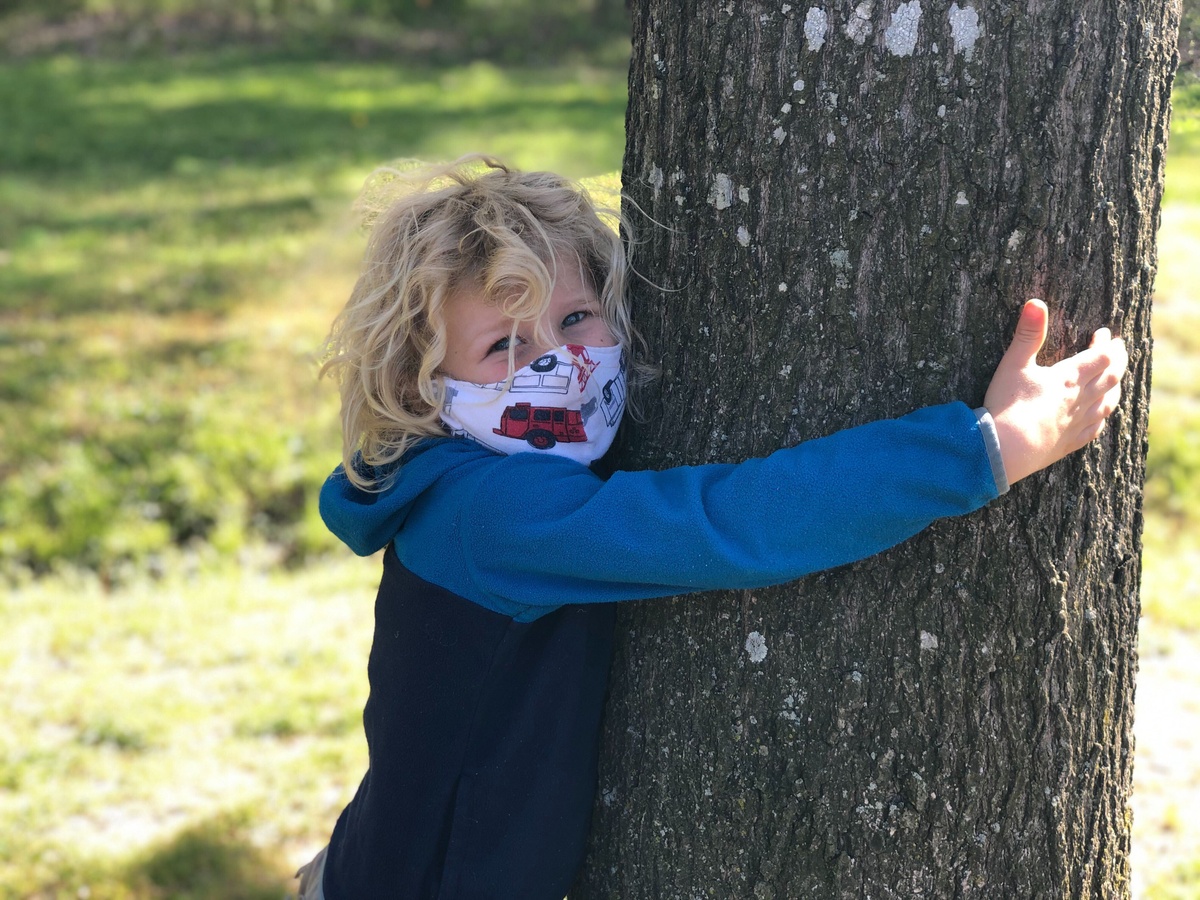For many of us, masks have played an important role in safely navigating public spaces throughout the pandemic. Until vaccines, masks were essential to stop the spread. When we couldn’t be sure that our kids would be able to keep six feet away from people outside the family, masks helped keep them safe. And, as variants expand, they feel important again when we are indoors in crowded spaces.
And masks have been one of the key precautions that helped establish safety for kids heading back to in-person school and daycare situations, as well as for the adults taking care of them.
Back to School Means Back to Masks
But, for so many kids, summer has meant time outside with friends. With the outdoors so much safer, kids have had so much more mask-free time. Now, each week this month, more and more kids are heading back to school. And, the CDC recommends all kids (and staff) wear masks in schools this fall. And, even for homeschooling friends, some group activities may move inside as fall cools and weather shifts, so masks may be in your mix once again.
For many, “back to masks” feels easier said than done, as masks can still be challenging. Although they have become part of life to so many kids, summer may have been a really big break, and it’s hard to go back again.
Masks still look strange, and it sure feels harder to use all of our 42 facial muscles to express emotion and communicate when we have them on. Plus, many kids do not like to have their face touched at all, never mind fabric and elastic. This is especially true for kids whose sensory systems are extra sensitive to touch.
Helping Kids (Re)Make Friends with Masks
But, kids can make friends with masks. Humans are wired to prefer the familiar, but kids are much better than we are at accepting new things—even new, old things.
If your kids will be returning to masks as school starts or have just now reached an age where masks are recommended, here are a few simple ways to make masks work for kids:
Babies and toddlers do not need masks. The CDC does not recommend masks for children under 2 or for anyone with difficulty breathing, so it is OK not to worry about cajoling your toddler into their mask.
Make sure kids can take off their masks.
Kids older than 2 should be able to take a mask off, but that requires that you provide a mask that is easy for kids to take off. Masks that tie in the back, for example, may be too challenging for kids, where a mask that tucks around the ears is easier for them to remove, if needed.
Make sure masks are comfortable.
At the start of quarantine, we hurriedly whipped together poorly sized masks made from particularly scratchy bandanas, safety pins and hair ties—a bad move. It took much convincing to get our then-5-year old to even try a new mask after that. Lesson learned. To the extent you can, make sure your child’s mask is soft and easy on the ears. The CDC recommends masks made specifically for children that fit properly, which means it fits snugly over the nose and mouth and under the chin and has no gaps in the sides.
If you have a child who is sensitive to how clothing rests on their skin, and you are able, pick more than one soft mask and welcome your child to pick the mask that they like best.
Let kids help pick and match their masks.
Letting kids choose in which mask they get gives them more of a sense of control, ownership and affinity for the masks they wear. If you can, give kids options for masks in colors or patterns that are fun or reflect their interests. (I never have to convince my son to wear his camouflage shark mask—he’d sleep in it if he could). Or try a mask like this mask that kids can color in themselves.
Masks kids are into will also be less scary—even fun to look at—in the mirror. And, if your child is into picking out their clothes each day, it can be fun to match the mask to the outfit.
Double down on the favorite mask(s).
If you can, get double or even triple of a favorite mask. Having back-ups helps keep mask-wearing smooth in case the favorite mask gets wet or on those days when it just needs a wash!
Keep masks clean and smelling good.
If masks get smelly (and they sure will), it’s such a drag for kids to wear it and breathe in that smell all day, especially kids who have sensitive sensory systems.
You can wash and dry most cloth masks in a laundry machine, if that is convenient for you. You can also wash them by hand in the sink using laundry detergent. Just soak the mask for 5 minutes in detergent/water mix, then rinse it thoroughly with water. Let the mask air dry or place it in the dryer.
No matter how you wash it, make sure it is fully dry before using it.
If you don’t have a dryer, just rub an air-dried mask between your hands a bit to work out the stiffness before handing it to kids.
Practice at home.
Identify times during the day here and there for the family to wear masks at home. Keep the time short and sweet at first, then make it longer each time. Kids will build back their stamina every time you practice, and they can get used to wearing their masks and to seeing you wear yours.
While we’re at it, mask practice can help us reinforce hand washing. Per the CDC, you should wash your hands before and after you put on a mask; why not add “washing our hands” as a step? And, while you’re at it, sing a few Happy Birthdays or Twinkle Twinkle Little Stars to help kids learn to scrub for 20 seconds, too. It can’t hurt to reinforce hand washing!
Need help finding masks for kids?
Masks for kids are widely available, at retailers from Target to Old Navy and more. You can search for “organic kids mask” and find sustainable masks, too. Want to make your own? Children's Hospital of Philadelphia has a pretty simple tutorial, and Jennifer Maker's mask includes an optional filter pocket, too.
Remember the greater lessons.
In the middle of it all, remember that the way we grown ups help our kids approach mask wearing teaches far more than how to handle this immediate moment. Recognizing and doing what is necessary to keep ourselves and others safe promotes empathy and connects us to one another in profound ways. And, learning how to recognize and work within new constraints in life empowers kids to meet whatever new twists and turns life will inevitably throw their way, helping them to realize that they can adjust, adapt and persist in new and even challenging situations—probably the greatest lesson we can teach.
Plus, just like our kids, we’ll likely feel more ready for back-to-mask time if we can help our kids make friends with masks.

